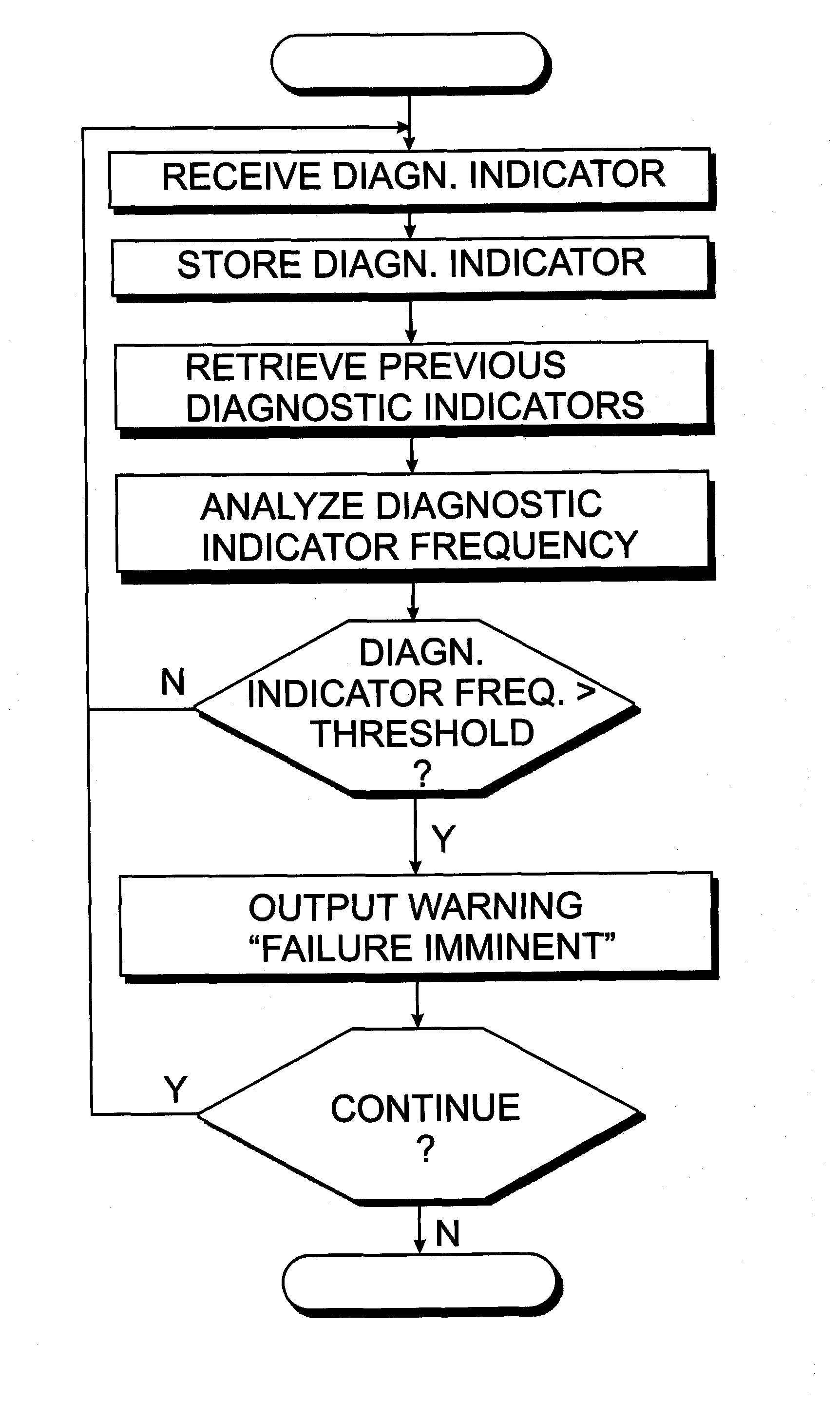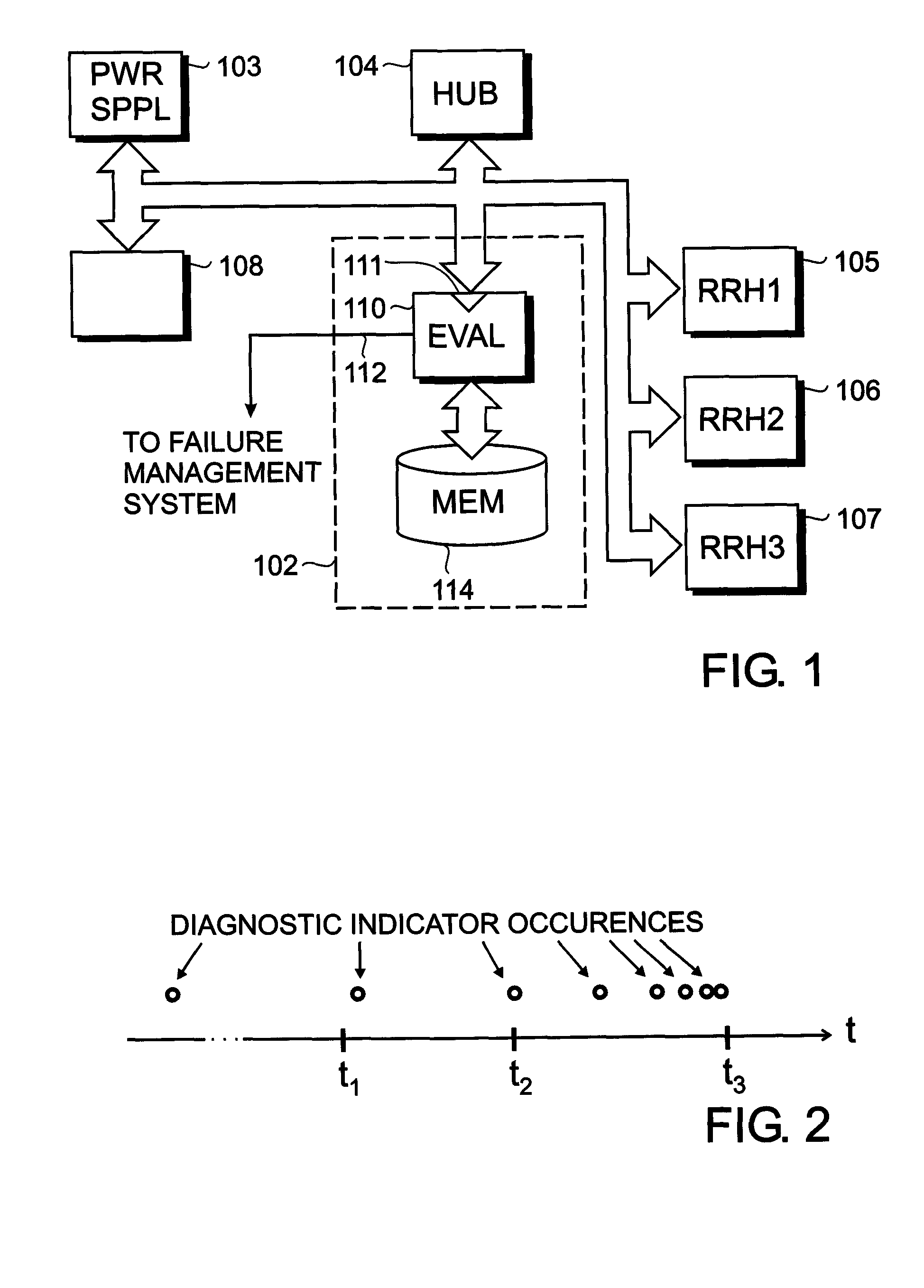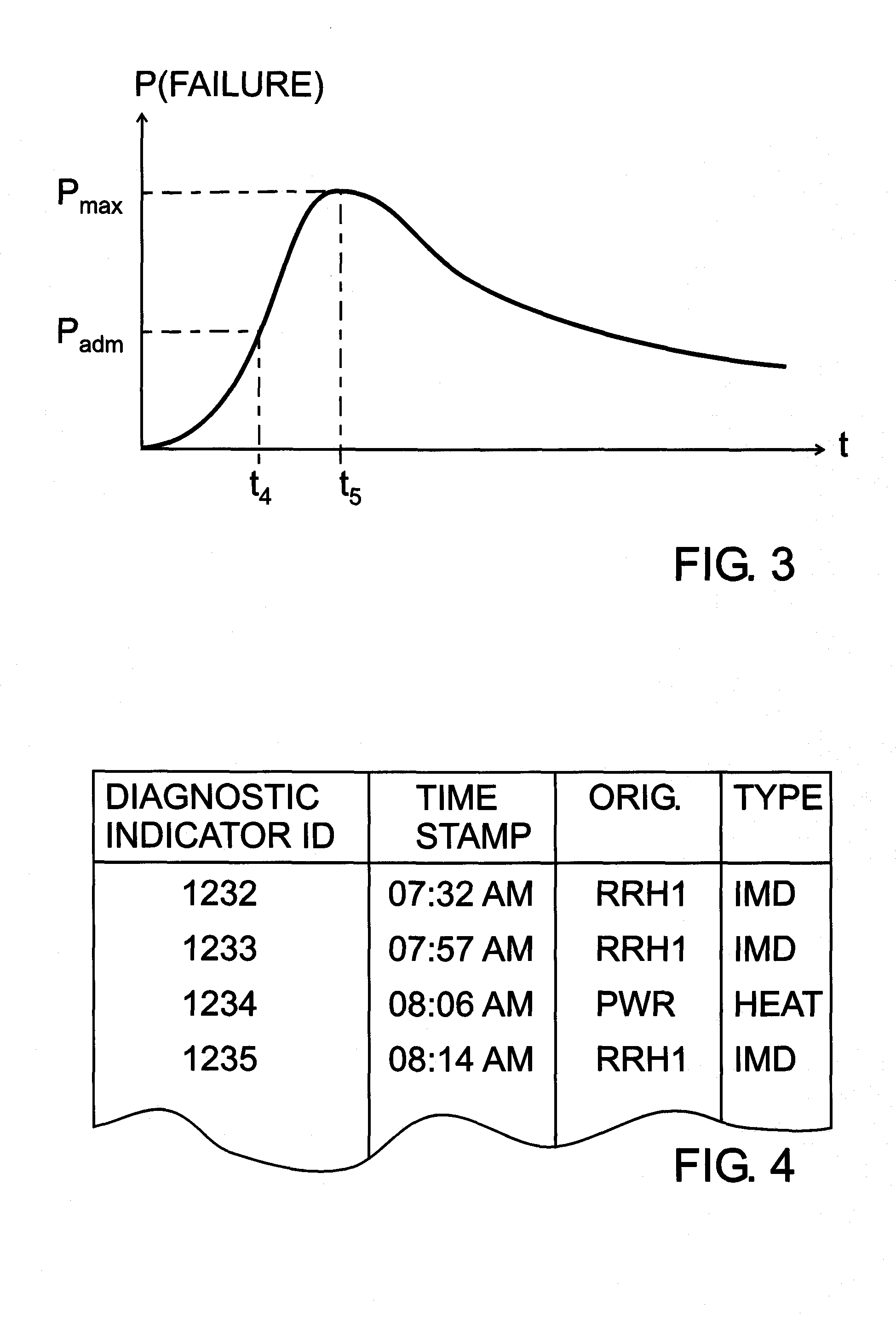Base-station failure predictor
a technology of base station and predictor, which is applied in the direction of transmission monitoring, wireless communication, modulation, etc., can solve the problems of sub-units to cease operation, different severity levels,
- Summary
- Abstract
- Description
- Claims
- Application Information
AI Technical Summary
Benefits of technology
Problems solved by technology
Method used
Image
Examples
Embodiment Construction
[0032]The invention will now be described on the basis of the drawings. It will be understood that the embodiments and aspects of the invention described herein are only examples and do not limit the protective scope of the claims in any way. The invention is defined by the claims and their equivalents. It will also be understood that features of one aspect can be combined with a feature of different aspects. The base-station failure predictor as described herein may be implemented in hardware, in software, or as a combination of both without departing from the spirit of the invention.
[0033]The teachings disclosed herein are based on the idea of examining the frequency of minor diagnostic indicators, alarms and / or warnings (or combinations thereof). The examination is used to assess a likelihood of imminent failure. For example, an automated reset of a module or sub-unit would not typically be reported to the remainder of the base-station, if the automated reset had been successfull...
PUM
 Login to View More
Login to View More Abstract
Description
Claims
Application Information
 Login to View More
Login to View More - R&D
- Intellectual Property
- Life Sciences
- Materials
- Tech Scout
- Unparalleled Data Quality
- Higher Quality Content
- 60% Fewer Hallucinations
Browse by: Latest US Patents, China's latest patents, Technical Efficacy Thesaurus, Application Domain, Technology Topic, Popular Technical Reports.
© 2025 PatSnap. All rights reserved.Legal|Privacy policy|Modern Slavery Act Transparency Statement|Sitemap|About US| Contact US: help@patsnap.com



